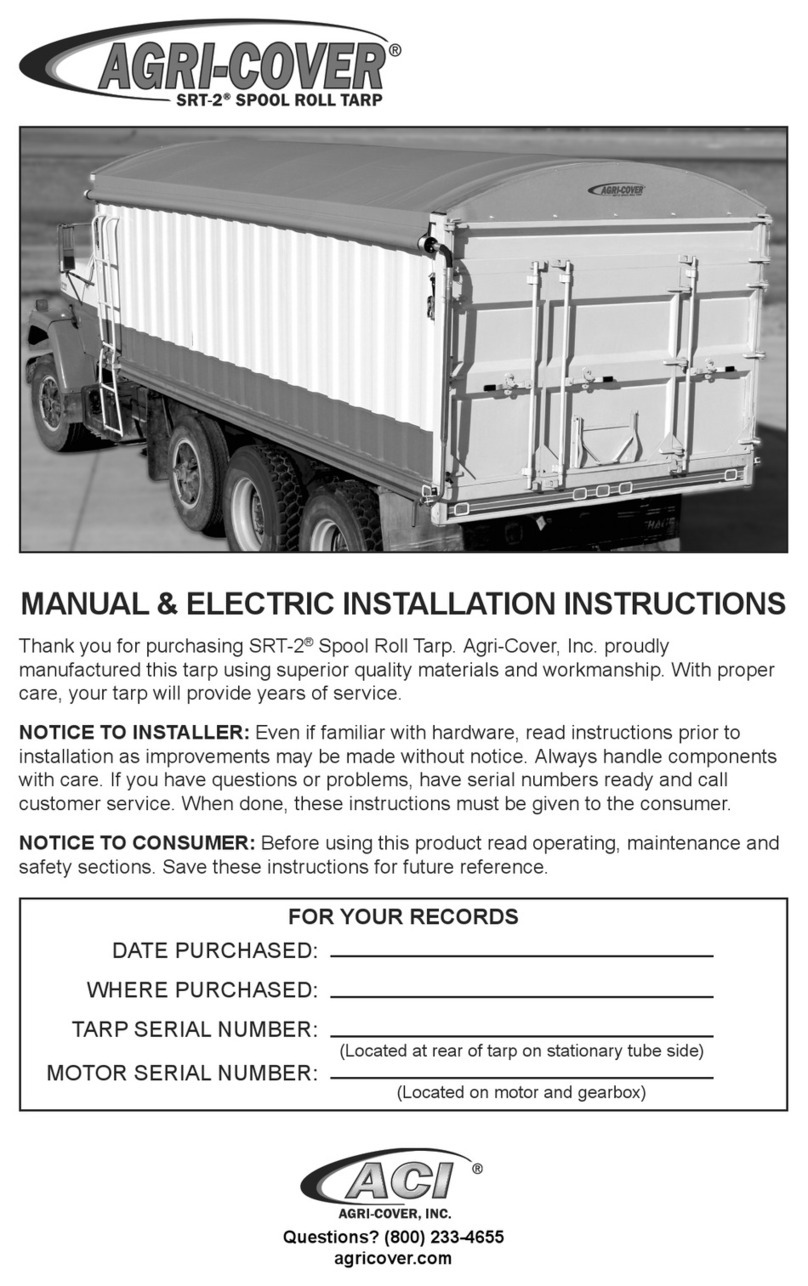
2
PREPARATION
• Prior to tarp system assembly, park truck or trailer on level ground.
• Box must be square and straight, center must not be pulled together or spread apart.
• Before beginning, measure outer length and width of your box. Also measure length
of tarp and width of the end caps to ensure you received the correct size.
• Remove or grind smooth any sharp edges or points contacting tarp and/or cables.
• Remove or reposition any interferences with tarp. If modications to box are needed,
consult box manufacturer.
• It may be necessary to use washers and nuts or other types of fasteners (not
furnished) to ensure a solid anchor.
• Ensure box extension is secure by bolting in place on top of your box.
TOOLS NEEDED OPTIONAL TOOLS NEEDED
• 1/2”, 9/16” and 3/4” Wrenches
• 3/16” Allen wrench
• Threadlock adhesive
• Step ladders or scaolding
• Drill with 5/16” and 3/8” bits
• Tape measure
• Impact wrench with 9/16” socket
• Hammer
• Protective eyewear
• Cutting tool(s)
• Marking pencil
• Liner tool
• Clamps
• Heat source
NOTE: Hardware appearance and components may vary.
!CAUTION:Before drilling, ensure there are no hidden wires or gussets in line
with holes to be drilled.
STAINLESS STEEL ONLY
!CAUTION: To avoid galling of stainless steel hardware, use anti-galling
spray, grease or lubricant on threads and avoid high speed when fastening.
Do not use impact tools for stainless steel hardware.
3/8” x 1” non-stainless steel self-threading bolts: Use to cut threads into 5/16”
holes. Drill 5/16” hole. Turn 3/8” x 1” self-threading bolt in hole to cut threads, then
turn back out.






























